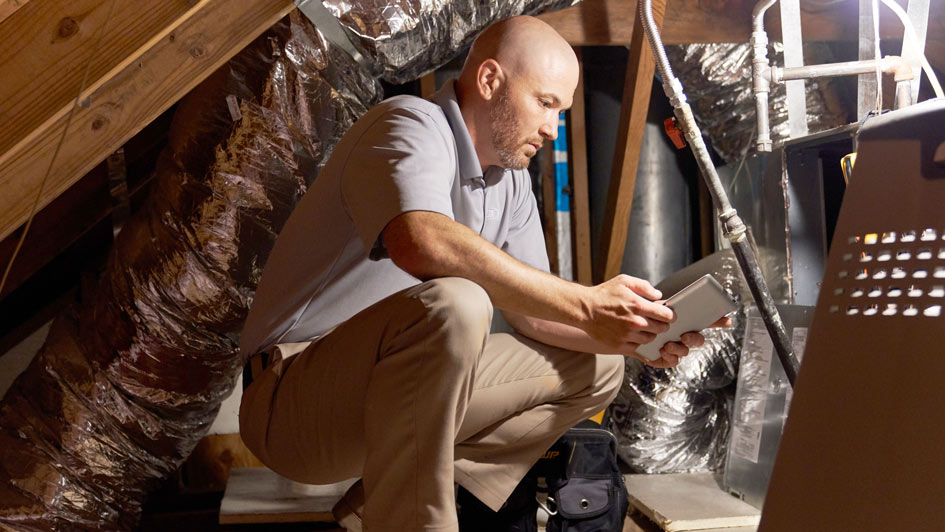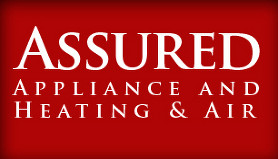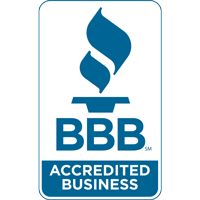
Would you believe that more than 50% of your home’s energy costs are from your heating and cooling? That’s why it’s essential to have an energy-efficient HVAC system.
Furnace efficiency standards were last updated to an Annual Fuel Utilization Efficiency (AFUE) rating of 80% in 2015. This rating system illustrates how effective your furnace is at natural gas into heat. An AFUE rating of 80% means your furnace will waste about 20% of the fuel it uses while producing heat.
In 2022, the Biden Administration devised new energy-efficiency standards for residential gas furnaces that would greatly lower emissions, save homeowners money and promote sustainability.
These revised standards are projected to:
- Save Americans $1.9 billion annually.
- Reduce carbon emissions by 373 million metric tons and methane emissions by 5.1 million tons over the next 25 - 30 years, the equivalent of what 61 million homes emit annually.
Starting in 2029, the updated rule would require all new gas furnaces to feature AFUE ratings of 95%. This means furnaces would combust nearly 100% of the gas into usable heat.
With these facts in mind, you may be asking yourself "what happens to my existing furnace"? Currently, very little, as the proposed rule will not go into effect until 2029 at the earliest and does not affect furnaces that are already in use.
But if you need furnace replacement in soon, highly energy-efficient furnaces are ready and available. Learn how these furnaces can save you money on your utility bills.
Guide to Condensing Furnaces
How Condensing Furnaces Work
A condensing furnace is a type of heating system that uses a secondary heat exchanger to trap wasted heat from the furnace's exhaust gases. This decreases the amount of energy wasted, improves energy efficiency and lowers CO2 emissions. It also demands less natural gas to create the same volume of heat compared to other types of furnaces.
How Condensing Furnaces Differ from Non-Condensing Furnaces
The primary difference between a condensing furnace and a non-condensing furnace is condensing models use a secondary heat exchanger to capture any wasted heat from its exhaust gases, while the other does not.
How Long Condensing Furnaces Last
The life span of a condensing furnace is dependent on the brand, model and other factors. Generally speaking, a condensing furnace will last between 10-20 years with appropriate maintenance and regular service. If your heating system doesn’t have regular furnace maintenance, the equipment may struggle to perform as well, ultimately failing earlier than anticipated.
Why Condensing Furnaces Require a Higher Investment
For the most part, condensing furnaces enhanced precision is much more efficient than standard, single-speed furnaces, as it only uses the minimum amount of energy necessary to heat your home, resulting in more savings on your utility bill.
Many variable-speed furnaces are condensing furnaces, although some are available in non-condensing models with lower AFUE ratings. If a manufacturer wants a furnace to be classified as a condensing furnace, it must offer an AFUE rating of 90% or higher.
Do Variable-Speed Furnaces Run Constantly?
A variable-speed furnace doesn’t run all the time. Instead, it runs at different speeds according to the temperature in your Genoa home as well as the amount of energy it needs to sustain that temperature.
When sufficient energy is necessary to maintain your desired temperature level, the furnace will switch to a higher speed to manage the higher demand. Doing this will ensure more efficient heating in your home while also providing quieter operation.
Guide to Two-Stage Furnaces
Two-Stage Furnaces: What They Are and How They Work
A heating system with two settings of operating - high and low - is called a two-stage furnace. During the low stage, the furnace performs at a reduced capacity in order to maintain the desired temperature at your home more efficiently. During the high stage, the furnace will instead operate at full capacity to meet demands for increased heat. With a two-stage furnace, you can experience enhanced energy efficiency and balanced temperatures everywhere in your home.
While two-stage furnaces are exceptionally efficient, not all all types are condensing furnaces.
Does a Two-Stage Furnace Function All the Time?
A two-stage furnace won’t run all the time. In the low stage of operation, the furnace runs at reduced capacity in order to sustain a planned temperature more efficiently within your home. When a greater demand for energy is needed to sustain the set temperature, the unit will switch to its high stage and runs at full capacity. Because of this, two-stage furnaces are able to help reduce energy costs without operating around the clock.
Contrasting Two-Stage and Variable-Speed Furnaces
Two-stage furnaces have two stages of operation, low and high. During the low stage, the furnace runs at reduced capacity in order to uphold a desired level of comfort within your home. When more warmth or cooling is necessary, the furnace will switch to its high stage and operate at peak capacity.
Variable-speed furnaces, meanwhile, can work at a variety of speeds in order to uphold a comfortable temperature at home. As such, variable-speed furnaces offer greater savings on your utility bills .
Differences Between One- and Two-Stage Furnaces
One-stage furnaces have a single stage motor and operate either at full capacity or not at all. Consequently, the furnace is always running in order to maintain a desired comfort level at home.
Two-stage furnaces, by comparison, have two stages of operation, low and high. While in the low stage, the furnace runs at lower capacity in order to maintain the desired temperature more efficiently. When more warmth or cooling is desired, the furnace will change over to its high stage and operate at maximum capacity.
Make Your Furnace Installation Appointment with Assured Appliance & Heating & Air Today
Making sense of modern furnace technology can be confusing. That’s why Assured Appliance & Heating & Air experts are here to help with a free, no-pressure estimate for furnace installation. We’ll assess your home, your heating requirements and your budget before helping you find the ideal solution. Contact us at 847-306-8990 to get started today!

